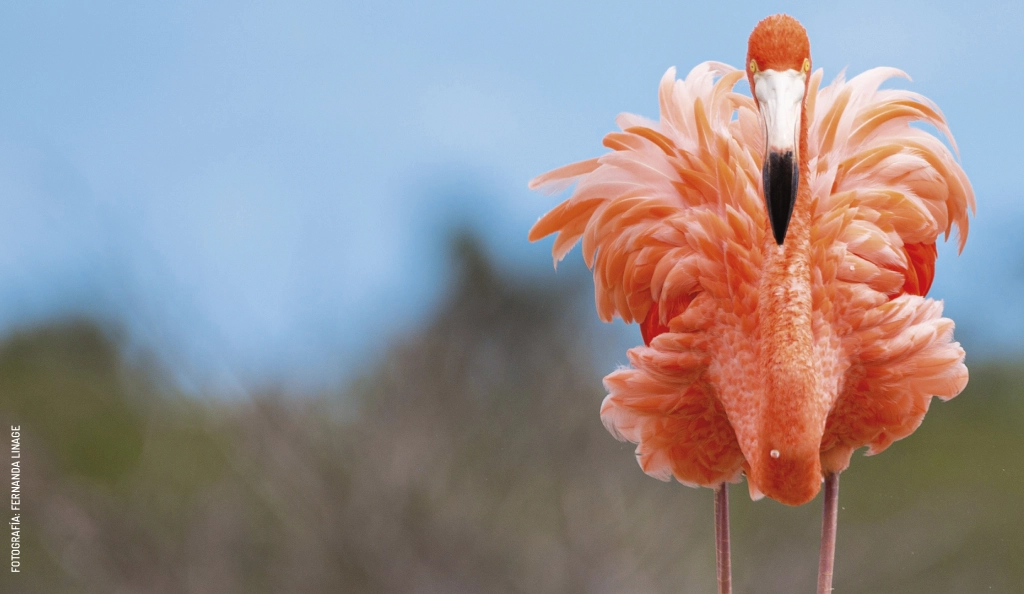
Flamingos in Yucatán: The Ultimate Sightseeing Guide
Yucatán is home to over 500 species of birds, from tiny hummingbirds to the eye-catching ocellate turkey. While many of them (like the turquoise motmot or the Northern cardinal) are basically local celebrities, few inspire as many travelers to go birdwatching as the families of flamingos that paint the Yucatecan coast a bright shade of coral pink.
Phoenicopterus ruber
American Flamingo, flamenco (Spanish), or méek koj (Maya)
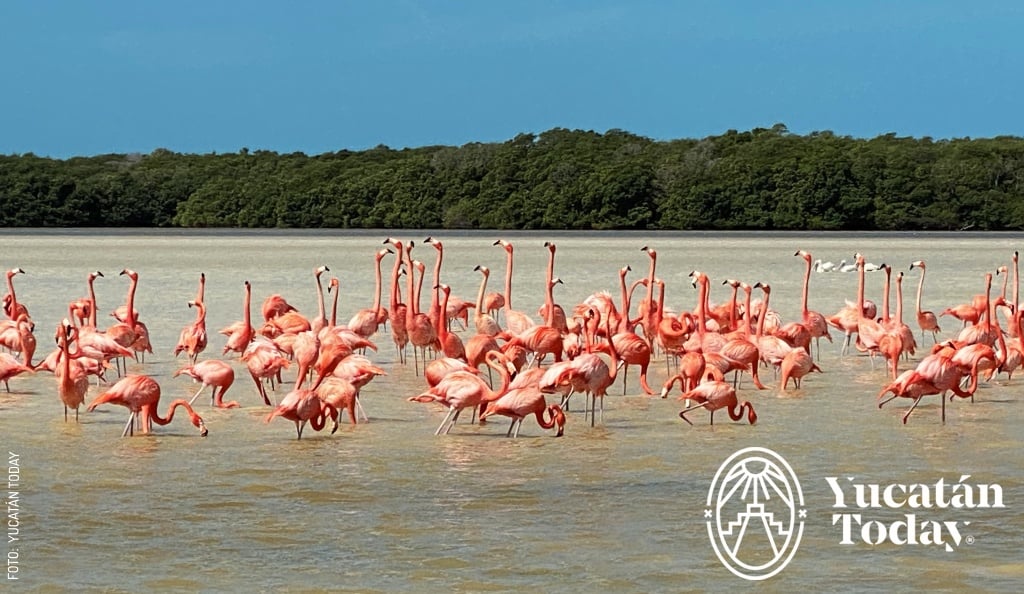
Whether you think of lawn ornaments, animated goofballs, or delicate, elegant birds, the word “flamingo” probably conjures up a vivid image in your mind. The natural features of the Yucatán Península make it one of the best places in the world to catch sight of large colonies of pink flamingos—colonies which are, very appropriately, called “flamboyances.”
In addition to the strength in their numbers, flamingos in Yucatán have some of the brightest plumage you can see anywhere in the world. The color of the American Flamingo here seems more salmon, orange, or coral than merely pink. This vibrant hue derives from their diet, consisting primarily of brine shrimp (which you might know as Sea Monkeys) and pink fly larvae, often called "bloodworms".
How do flamingos feed?
Both the tiny brine shrimp and bloodworms are found in the shallow brackish water and muddy sand of the Yucatán mangroves. To feed, flamingos turn their head upside down, forcing water and mud through their built-in filtering system and capturing the tiny critters that make up their diet.
![Flamenco-con-bebes-by-Fernanda-Linage]() Fabulous flamboyances and flamingo family life
Fabulous flamboyances and flamingo family life
Flamingos typically choose a single partner for the breeding season, through a process that involves a highly synchronized dance. Once the flamingos have mated, they build a foot-high, bucket-shaped, sandy mud nest, where a single egg is laid and brooded by both parents.
After 28–32 days, the egg will hatch. Flamingo chicks are usually white to very light gray, and stay in the nest for at least a week before they start forming crèches: groups of young that function as “day-cares” of sorts, that allow parents more time to gather food.
The flamingo chicks gradually begin turning reddish as they mature, but they won't achieve the vibrant coloration they’re famous for until they are at least four or five years of age.
What’s the best spot in Yucatán to see flamingos?

For many years, the answer was exclusively Celestún or Río Lagartos, depending on the time of year. However, because their habitat is the constantly changing coastal wetlands, factors like weather, water level, ecological conditions, and human presence impact where they feed, preen, rest, and bathe.
As a result, flamingos have made almost the entirety of the Yucatán coast their home. Any of the state’s ports gives you a chance to spot at least a small number of them, from Celestún, Sisal, or Chuburná, along the road to Chicxulub, Xcambó, and Telchac Puerto all the way to Dzilam de Bravo, and also in the Río Lagartos Biosphere Reserve (Río Lagartos, Las Coloradas, and El Cuyo).
Usually, the majority of the flock overwinters in the Celestún Biosphere Reserve from November to March, with the best times to see large flocks typically being between December and February. By mid-March, they disperse eastward along the coast to reach their breeding grounds in the Río Lagartos area in April/May.
Fragile flamingos
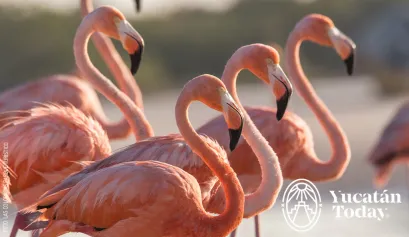
No bird likes to be near humans—for good reason. Responsible tour guides know this and will always encourage you to watch them from a distance that is safe both for you and the birds.
Flamingos need to run before they can take flight. If a large flamboyance is startled and many of them try to get away at the same time, their long, thin legs are very vulnerable to breaking. For these birds, a broken leg is often a death sentence. Always follow your guide’s instructions and err on the side of caution.
What does a flamingo sound like?
Despite them being marine birds, many people are surprised to discover that flamingos honk very much like geese. While there’s nothing like hearing them for yourself, here’s a link to some recorded calls: http://macaulaylibrary.org/audio/2446
With information by Cherie Pittillo
Sources

Author: Yucatán Today
Yucatán Today, the traveler's companion, has been covering Yucatán’s destinations, culture, gastronomy, and things to do for 37 years. Available in English and Spanish, it’s been featured in countless travel guides due to the quality of its content.
In love with Yucatán? Get the best of Yucatán Today in your email.
Don't miss our best articles and the monthly digital edition before anyone else.
Related articles
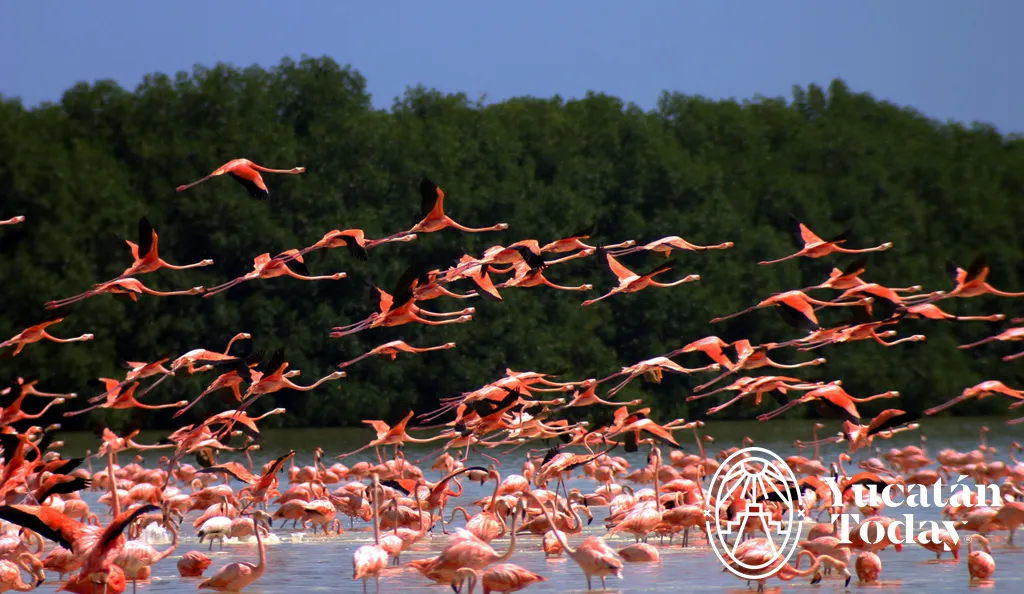
Celestún
Located 60 miles southwest of Merida, Celestún is a quaint fishing village where the beaches are lovely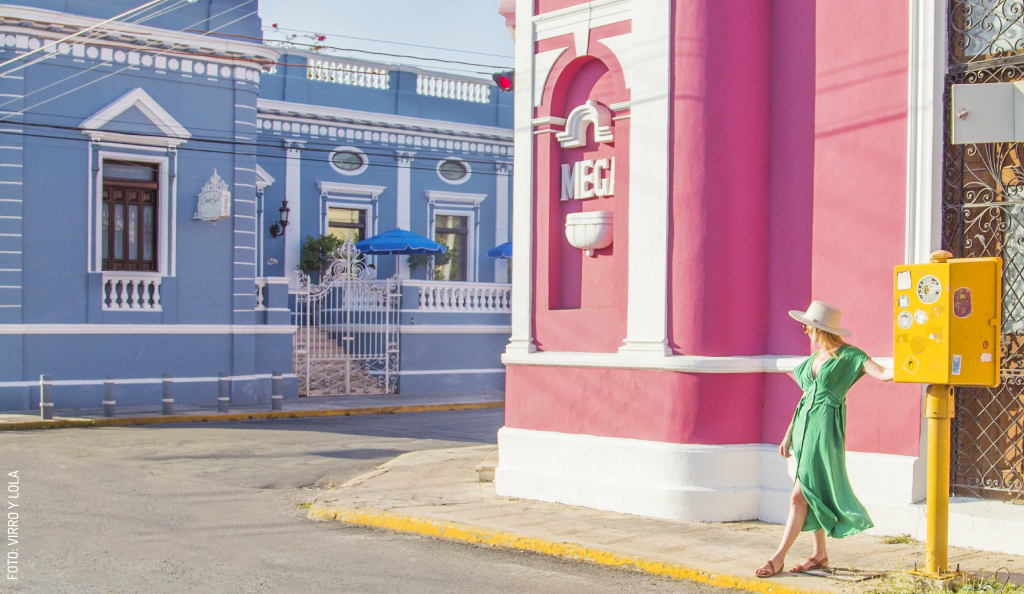
The Ultimate Yucatán Bucket List: From Ancient Maya Ruins to Legendary...
Visit Yucatán: Maya archaeological sites, cenotes, historic haciendas, and flamingos. Experience the best of Yucatecan culture and nature.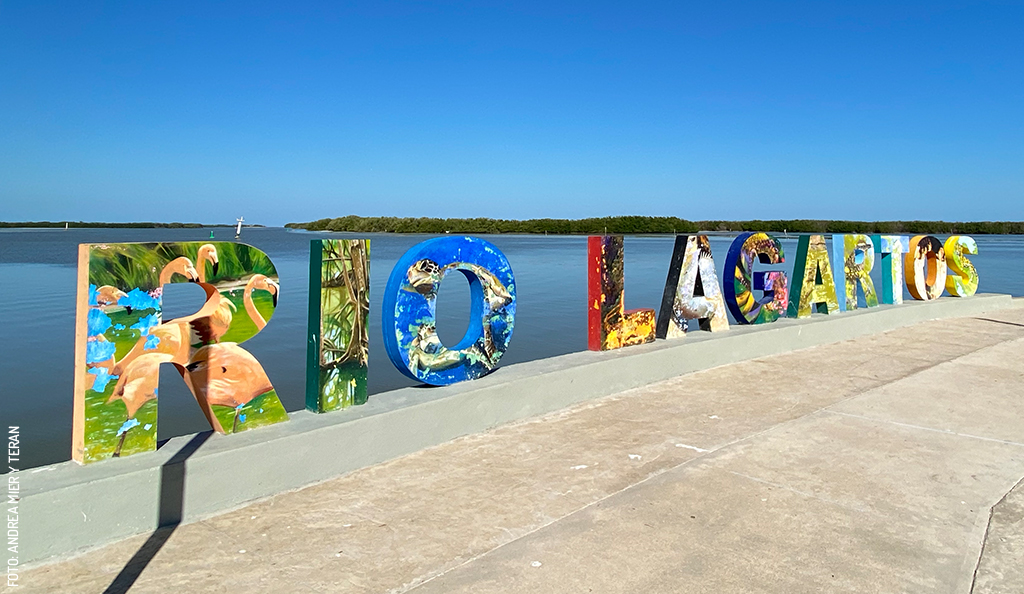



 Fabulous flamboyances and flamingo family life
Fabulous flamboyances and flamingo family life